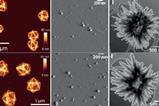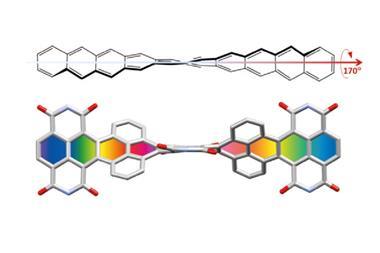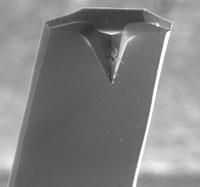Molecule of 10 fused benzene rings in a row has been made for the first time

Decacene, a molecule comprising 10 linearly fused benzene rings,1 has become the longest acene ever made, seven years after the nine-ring nonacene was first detected.2
Naphthalene and anthracene – consisting respectively of two and three fused benzene rings – are well known and stable compounds. Higher acenes, however, become more unstable the longer they get; those beyond pentacene have proven particularly tricky to synthesise. The seven-ring heptacene was first isolated earlier this year, a feat that took 75 years to accomplish.3
A team around Francesca Moresco from the Technical University Dresden, Germany, and Diego Peña from the University of Santiago de Compostela, Spain, have now synthesises decacene by plucking oxygen off a precursor that was immobilised on a gold surface. Scanning tunnelling microscopy at -268°C then revealed the elusive acene as a caterpillar-like structure.
Although decacene is currently too unstable for any practical applications, researchers are interested in exploring its electronic properties – pentacene, for example, is a semiconductor used in organic electronics.
References
1. J Krüger et al, Angew. Chem. Int. Ed., 2017, DOI: 10.1002/anie.201706156
2. C Tönshoff and H F Bettinger, Angew. Chem. Int. Ed., 2010, 49, 4125 (DOI: 10.1002/anie.200906355)
3. R Einholz et al, J. Am. Chem. Soc., 2017, 139, 4435 (DOI: 10.1021/jacs.6b13212)

















No comments yet